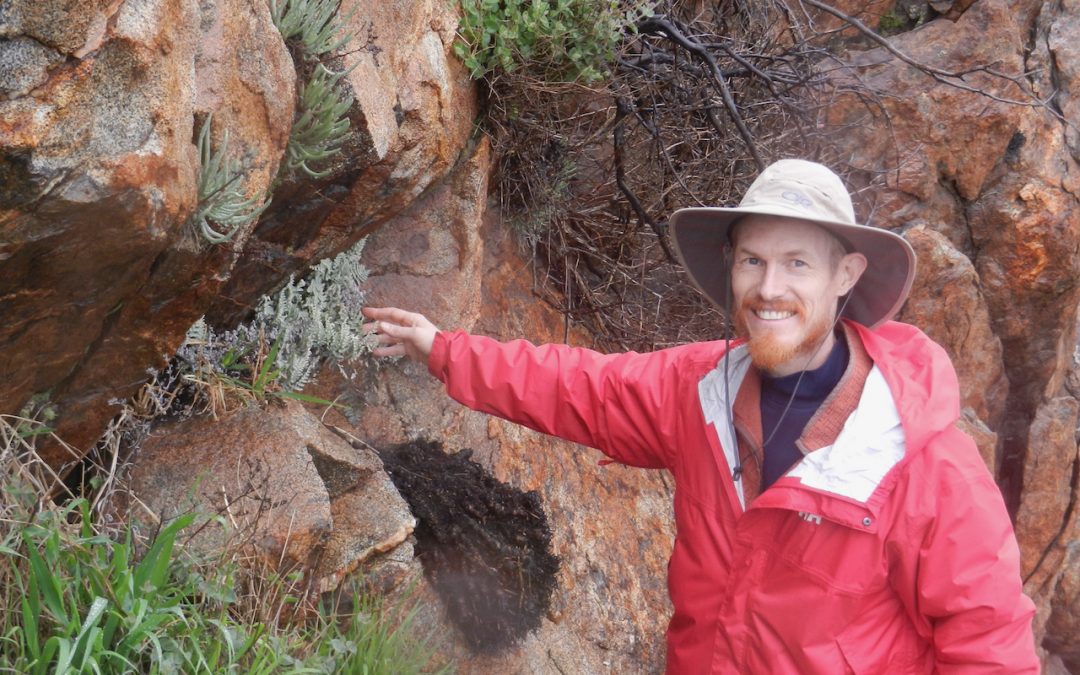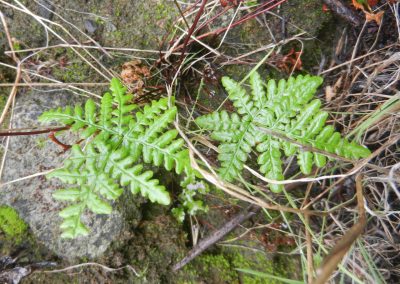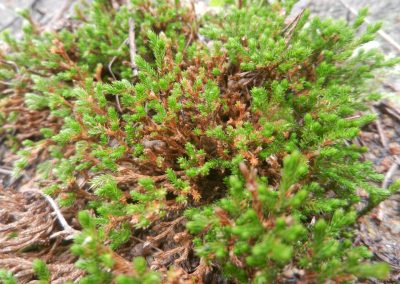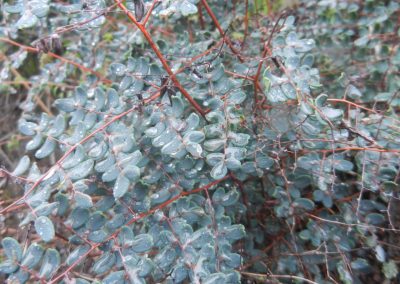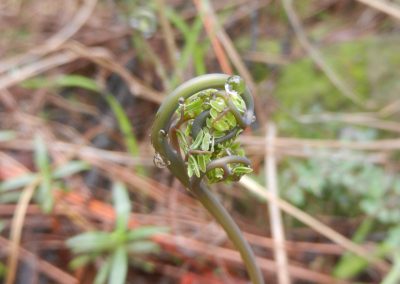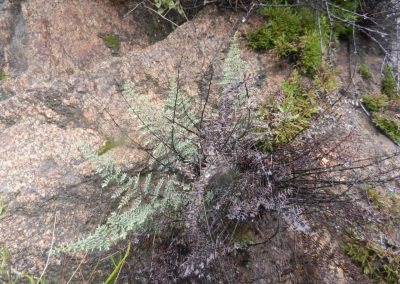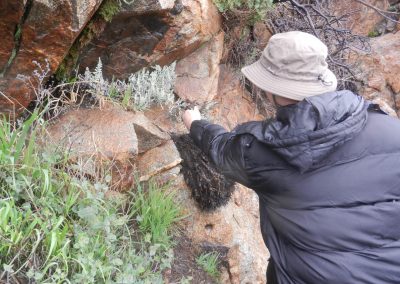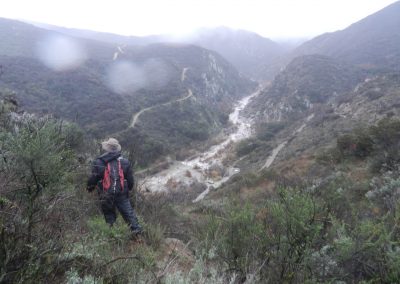UC Berkeley researchers study ferns and lycophytes at SMER
Two researchers from the Rothfels Lab in the Integrative Biology Department of the University of California, Berkeley visited the Santa Margarita Ecological Reserve (SMER) in mid-January. The Rothfels Lab studies phylogenetic relationships and biodiversity of a number of plant lineages, with an emphasis on lycophytes and ferns. Keir Wefferling focuses on Pentagramma (the goldback and silverback ferns) and Forrest Freund focuses on the lycophyte genus Isoëtes (quillwort).
Dr Keir Wefferling’s postdoctoral research focuses on cryptic biological diversity in plants, particularly at the species to population levels and in polyploid species complexes—i.e., groups of closely related taxa with different numbers of sets of chromosomes. His overall goal is to work toward an increased understanding of how genome duplication and hybridization contribute to extant species diversity and distribution.
The drought-tolerant fern genus Pentagramma (Pteridaceae) is a useful model for Keir’s questions. In the goldback and silverback ferns, there are currently six recognized diploid species and an unknown number of polyploids (mostly triploids and tetraploids) formed through natural hybridization among those diploids. In order to get a better grasp of the morphological, genetic, and chromosome number variation among different populations of Pentagramma, Keir is sampling across the range of the genus, incorporating material from herbarium specimens and from the field. SMER is situated at the range edge of two diploid species of silverback fern, P. viscosa and P. glanduloviscida. Goldback fern, P. triangularis, is a widespread species, stretching from Baja California to British Columbia, and is common on the Reserve (and is the only species they encountered at SMER). Fresh and living material collected on this trip will be particularly useful as it provides high quality DNA and RNA for sequencing work, is ideal for genome size analysis using flow cytometry, and may yield meiotically active cells suitable for chromosome counting work. Says Keir, “Having access to such a high-quality site for botanical collections makes my work possible and contributes so much to efforts in assessing the biodiversity of California and the evolutionary relationships among some of the resident species.”
Their January visit to the Reserve, amidst some magnificent rains, yielded a number of interesting finds including the goldback fern (Pentagramma triangularis), the spikemoss Selaginella bigelovii, the lip fern Myriopteris newberryi (formerly in the genus Cheilanthes), coffee cliffbrake, or Pellaea andromedifolia, and bird’s foot cliffbrake, or Pellaea mucronata (which was not locally common enough to collect, but its presence was appreciated by the researchers).
Learn more about this project from the Rothfels lab website. Click on the gallery thumbnails below for larger images.

